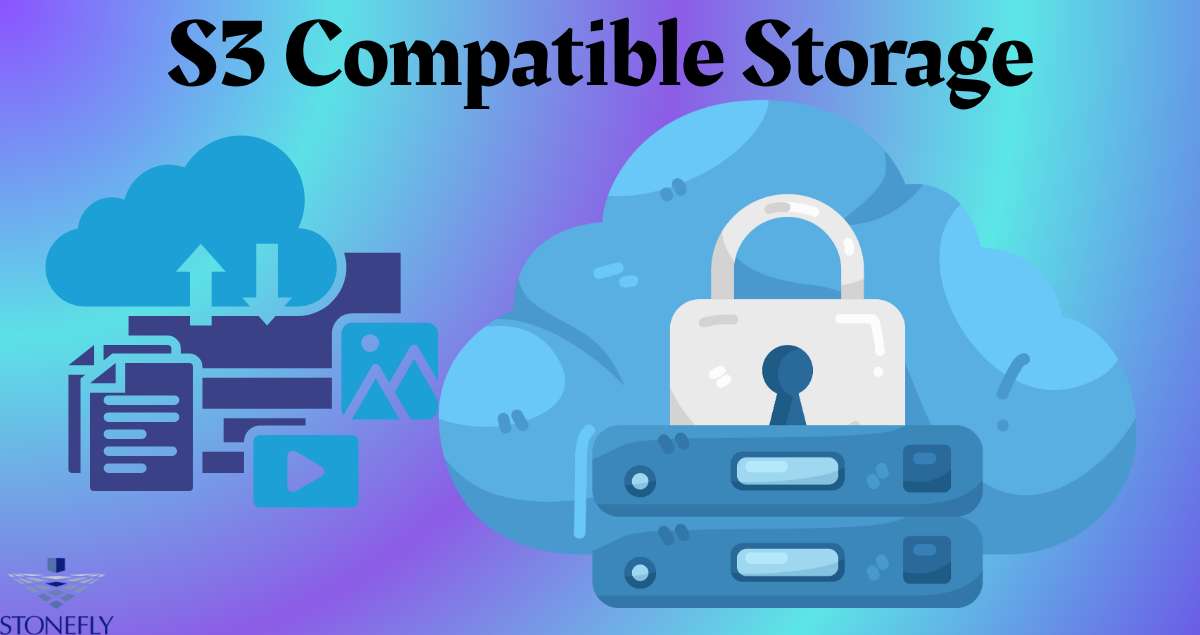S3 Appliance: Simplifying Storage with Smart Solutions

Organized Data Management: Simplifying Storage with Smart Solutions
In the age of information overload, managing your data
shouldn’t feel like looking for a needle in a haystack. Yet, many individuals
and businesses struggle daily with disorganized files, scattered folders, and
wasted hours trying to track down a single document. That’s where modern
storage solutions step in, streamlining how your data is stored, accessed, and
managed. One standout tool in this arena is the S3 Appliance, which
provides a structured, intuitive way to handle data while eliminating clutter
and chaos from your digital ecosystem.
This article will guide you through how organized data
management can transform the way you interact with your files and how tools
like the S3 Appliance can help you stay on top of it all.
Why Organized Data Management Matters
Poorly managed data isn’t just an inconvenience—it’s a
liability. Think about it: time spent searching for misplaced files,
duplicating efforts, and handling inconsistencies in data can directly impact
productivity, client trust, and business outcomes.
Whether you're a small business owner, an IT administrator,
or just someone who works with a mountain of digital content, having an
organized system in place is crucial. That’s where structured storage
solutions, like the S3 Appliance, come into play.
These tools allow you to:
- Tag
files for easy identification
- Categorize
information by type, date, or relevance
- Automate
file sorting based on rules or patterns
Let’s break down how this works and why it’s so important.
The Problem: Chaos in File Systems
Haphazard Folders & No Standard Naming Convention
We’ve all seen it—a folder named “New Folder (7)” filled
with a mix of PDFs, images, spreadsheets, and backups. Without proper naming
conventions or folder hierarchies, even finding yesterday’s report becomes a
chore.
Duplication of Files
Unorganized data often leads to file duplication. You save
multiple versions of the same file across different folders, unsure of which is
the latest one. This not only wastes space but creates confusion and the risk
of using outdated information.
Data Silos and Access Bottlenecks
In larger organizations, different teams may store data in
isolated silos. Without a centralized structure, collaboration becomes
inefficient. If one team needs a file created by another, they might not even
know where to look.
The Solution: Smarter Data Storage with S3 Appliance
Centralized Storage with Built-In Organization
The S3 Appliance enables centralized storage where
your files are managed in a structured, policy-driven way. Instead of just dumping
files into a massive repository, you get a system that supports:
- Metadata
tagging for identifying content without opening each file
- Custom
folders based on rules, like type, date, or user input
- Automated
archiving and file lifecycle management
Tagging and Categorization
Why scroll through endless filenames when you can search by
tags like “invoice,” “HR,” or “2025-Q2”? The S3 Appliance allows you to assign
tags and categories that improve searchability and reduce the need to open each
file manually.
Automated Sorting Rules
Want all PDFs uploaded today to go into a “Reports” folder
automatically? Or all videos larger than 500MB sent to an archive zone? No
problem. With rule-based automation, the S3 Appliance lets you define how your
data behaves once it's uploaded.
Benefits of Organized Data Management
H2: Faster File Retrieval
Tagging and automation significantly cut down on search
times. Instead of browsing through folders manually, users can simply search by
category or keyword and access files instantly.
H2: Improved Team Collaboration
Shared file structure and categorization rules ensure that
every team member sees the same system. No more "Where did you save
that?" emails. Everyone knows where everything is.
H2: Enhanced Data Accuracy and Version Control
You can eliminate multiple copies of the same file, reducing
confusion about which version is the latest. Plus, structured systems often
support version tracking, helping maintain data integrity.
H2: Data Compliance Made Easier
For businesses handling sensitive or regulated information,
organized data storage helps maintain compliance with data protection
standards. Clear logs, traceability, and access control come built into most
professional storage solutions.
How S3 Appliance Transforms Your Storage Game
Let’s say you manage a creative team that produces graphics,
videos, and client documents. On any given day, dozens of files are created,
revised, and shared. Without structure, your team ends up wasting time figuring
out where things go—or worse, losing important content.
Here’s how the S3 Appliance helps:
- Files
are tagged automatically based on content type and metadata
- Folders
are created dynamically based on file type or project name
- All
data is indexed for quick search and filtering
- You
set rules: e.g., “All media files go to /Marketing,” “Invoices go to
/Finance”
This system not only declutters your digital workspace but
also creates an intuitive workflow that scales as your data grows.
Practical Tips for Getting Started
H3: Create a Standard Naming Convention
Decide on a consistent format for naming your files. This
could include project names, dates, and version numbers. Consistency is key to
effective data organization.
H3: Set Folder Hierarchies Based on Function
Instead of storing everything in one “Documents” folder,
break it down:
- /Projects
- /Invoices
- /HR
- /Marketing
This makes browsing more intuitive and organized.
H3: Use Metadata and Tags Religiously
The more tags, the better your search results. If your
storage system allows you to tag by department, year, or file type—use it.
H3: Audit Your Storage Regularly
Even with automation, it’s good practice to review your
storage once a quarter. Look for outdated files, duplicates, and any clutter
that might’ve slipped through.
Conclusion
In a world where data is only increasing, disorganization is
no longer just an annoyance—it’s a serious bottleneck. Investing in structured,
smart, and scalable storage like the S3 Appliance can be a game-changer.
With features like tagging, categorization, and Rule-based automation, you not
only save time but boost productivity, ensure compliance, and reduce storage
chaos.
Organized data management isn’t a luxury—it’s a necessity.
And with the right tools, it’s easier than ever to achieve.
FAQs
Q1. What makes a storage solution like an S3 Appliance better than regular
hard drives or file servers?
A regular file server stores data, but an S3 Appliance
organizes it intelligently with tagging, automation, and centralized
management—making retrieval and collaboration much easier.
Q2. Can I set up automatic rules for sorting files with an S3 Appliance?
Yes! One of the core benefits of an S3 Appliance is
rule-based automation, allowing you to create folders and sort data
automatically based on file type, size, metadata, or user-defined rules.
Q3. Does organized data management improve security?
Absolutely. An organized system makes it easier to implement
access controls, track changes, and detect unauthorized activity. It also
reduces the chances of sensitive data being misplaced or misused.
Q4. How does metadata tagging help with data retrieval?
Metadata tagging allows files to be searched based on
specific attributes without needing to know the exact filename or location,
which makes finding data quicker and more precise.
Q5. Is this kind of solution only for large businesses?
Not at all. While large businesses benefit from scalable
storage like S3 Appliances, small and medium businesses can also gain massive
advantages from smarter, more structured data management.




